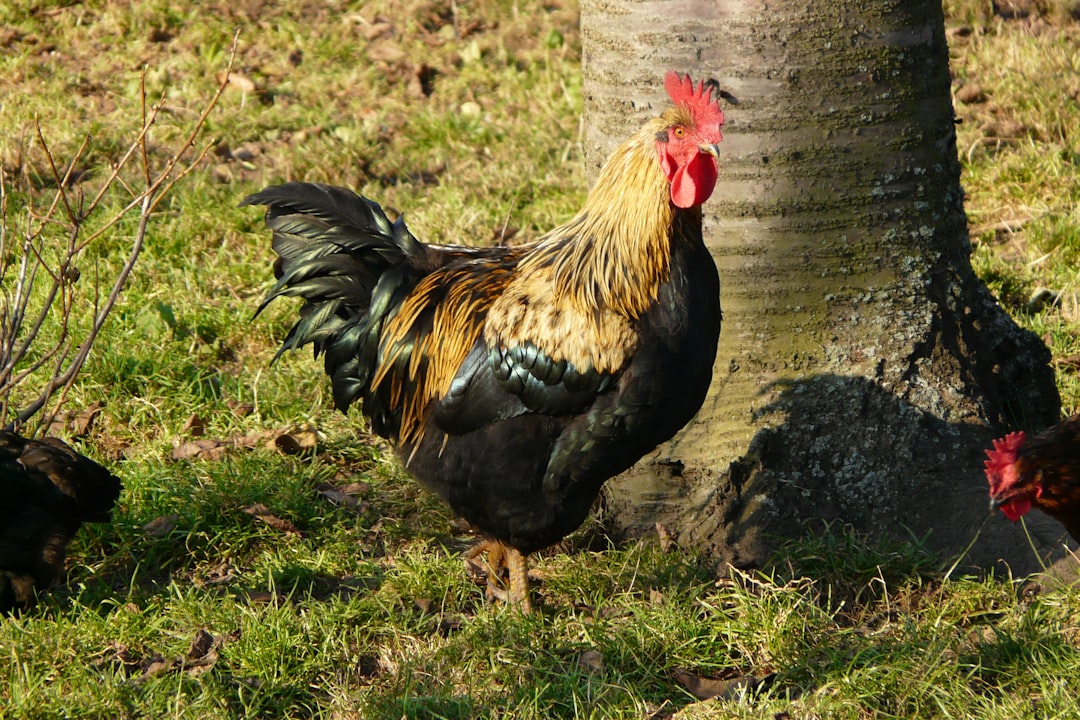Cock-a-doodle-do! The Fascinating History Behind the Rooster on Chianti Wine Bottles
Cock-a-doodle-do! The Fascinating History Behind the Rooster on Chianti Wine Bottles - The Black Rooster Rises at Dawn

As the inky blackness of night gives way to the first pinkish glow of dawn, a raucous chorus rings out across the rolling hills of Tuscany. The famous black roosters of Chianti begin to crow, heralding the new day. Though we may take these noisy roosters for granted today, their presence on the iconic straw-wrapped bottles of Chianti wine carries centuries of meaning.
The black rooster's connection to Chianti dates back to the Middle Ages, when Florence and Siena were engaged in a bitter rivalry. In the 13th century, the two city-states divided up the lush Chianti territory. They agreed that the border between their lands would be determined by a race between a horse from Siena and a rooster from Florence. On the fateful day, the confident Sienese watched their speedy horse bolt from the starting line. But the cunning Florentines had kept their rooster hungry, and when its cage was opened, the famished fowl rushed straight for a bowl of food placed at the finish line. The sneaky rooster was declared the victor, expanding Florence's claim over Chianti's prime winegrowing region.
Though the tale may be more legend than fact, the crafty rooster became a prominent symbol of Florence, often depicted in art and on flags. When Chianti sought to define the boundaries of its wine region in the 1700s, prominent Florentine producer baron Bettino Ricasoli made the black rooster the emblem on bottles from the original Chianti Classico zone. The baron also developed the first standardized Chianti wine recipe, calling for a predominant blend of Sangiovese along with small amounts of Canaiolo and Malvasia grapes.
What else is in this post?
- Cock-a-doodle-do! The Fascinating History Behind the Rooster on Chianti Wine Bottles - The Black Rooster Rises at Dawn
- Cock-a-doodle-do! The Fascinating History Behind the Rooster on Chianti Wine Bottles - Why Does This Fowl Fancy the Grape?
- Cock-a-doodle-do! The Fascinating History Behind the Rooster on Chianti Wine Bottles - From Renaissance Ruse to Marketing Mascot
Cock-a-doodle-do! The Fascinating History Behind the Rooster on Chianti Wine Bottles - Why Does This Fowl Fancy the Grape?
The proud black rooster may seem an odd mascot for a wine, but its links to Chianti have deeper roots than many realize. As it turns out, the rooster's affinity for the grapevine goes back centuries.
Long before the rambunctious rooster marched across bottle labels, images of roosters and vines appeared together in Renaissance art. The rooster had symbolic ties to watchfulness and vigilance, making it a fitting guardian of the precious grapes. Artists like Raphael and Piero di Cosimo portrayed the bird keeping careful watch over twisting, leafy vines heavy with plump fruit. Master painters captured the rooster's alert pose and piercing gaze, presenting it as a protector of the harvest.
Later, as Chianti sought to define the boundaries of its wine production zone, the black rooster's familiar form lent it an air of authority. Its connection to the city of Florence made it the perfect emblem of an authentic wine steeped in local tradition. The Consorzio del Vino Chianti Classico, a union of producers founded in 1924, officially adopted the storied black rooster as its symbol. Through the decades, even as Chianti labels showcased artwork ranging from coats of arms to scenic landscapes, the black rooster remained a constant fixture.
Today, the rooster epitomizes the essence of Chianti – crowing with pride, watchful over quality, and a guardian of winemaking tradition. Its origins may be obscured by the mists of legend, but after centuries of vintners proudly displaying the rooster seal, its connection to those beloved straw-wrapped bottles is undeniable. For wine lovers seeking an authentic taste of Tuscany, seeing the rooster means the Chianti in their glass will deliver.
Cock-a-doodle-do! The Fascinating History Behind the Rooster on Chianti Wine Bottles - From Renaissance Ruse to Marketing Mascot
The crafty rooster's race may seem like a fanciful tale, but this vivid legend laid the groundwork for the black rooster's enduring legacy as a Chianti icon. While the exact origins of the story are unknown, it encapsulates the resourcefulness and regional pride that would later make the rooster the perfect mascot for Chianti wine.
As the story goes, back in the tumultuous 1200s, the rival city-states of Florence and Siena were locked in a bitter boundary dispute over control of the verdant Chianti countryside. They agreed to settle the matter through an unusual race pitting a Sienese horse against a Florentine rooster. Siena was confident its swift steed would triumph. But the Florentines had a trick up their feathered sleeves - they starved their rooster so when it spied a bowl of food at the finish line, it sprinted straight for the meal. The hastily pecking bird was declared the winner, expanding Florence's claim over Chianti's prized vineyards.
While the tale may mix myth and legend, it casts the rooster as a clever, speedy hero outwitting a formidable foe. The wily bird embodied the scrappy spirit of Florence, willing to ruffle feathers to gain every advantage and outfox the competition. These qualities likely inspired early Renaissance artists to pair the vigilant rooster with the precious grapevine, casting the bird as a guardian of the harvest.
Centuries later, that same tenacity and regional pride cemented the black rooster's role as the icon for Chianti wine. Like the gutsy rooster hero of lore, Chianti vintners boldly defied winemaking conventions to elevate Sangiovese as the region's star grape. And when Chianti sought to define its identity and prevent imposters, the black rooster's ties to Florence made it the perfect distinctive mark of authenticity.
